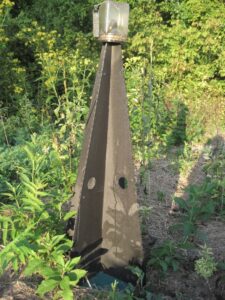Brown marmorated stink bugs (Halyomorpha halys) are not yet an established pest in Australia but are established in parts of Europe and North America. Vigilance is required as there have been recent detections in goods entering Australia from high-risk countries including Italy and the United States. Early detection of this pest is vital and will decrease the chance of its establishment in Australia.
Monitoring in overseas goods
When receiving goods from overseas, it is very important keep an eye out for pests and other biosecurity risks. Pests can be found in shipping containers, on machinery and inside cartons and packaging, including timber pallets.
If any type of live pest is seen while unpacking or moving goods:
- collect and contain a specimen
- re-seal any opened boxes, re-pack the container where possible, and shut the container doors
- do not move the container, especially to an outside area
- report it quickly to the See. Secure. Report. hotline on 1800 798 636 for assistance.
Vineyard monitoring
Surveillance and control measures for BMSB focus on the edges and borders of susceptible crops as these are preferred feeding sites. Visual surveillance for live insects and feeding damage is often used in conjunction with pheromone-lure traps that are becoming an effective detection tool. The most common trap design consists of a black pyramid-shaped traps containing an entry cone at its tip containing the pheromone attractant. Black pyramid traps are also a visual cue for BMSB, as their likeness in colour to a dark tree-trunk exploits known behavioural tendencies of both nymphs and adults to ascend tree trunks. This design has been proven to be more effective than other trap colours and styles (Leskey 2012). Trap catch numbers can guide the timing and frequency of pesticide applications, reducing pesticide costs and resistance and limiting impacts on non-target species and existing integrated pest management systems (Leskey 2020). Current research is focused on the development of more attractive pheromone-lure chemicals and to identify optimal location and spacing of traps for improved monitoring and detection (Rice 2017). Black Pyramid traps have been used at Australian sites where there have been detections in overseas cargo (Horwood 2019)

Black pyramid trap using a pheromone lure. Tracy Leskey, USDA ARS. Reproduced with permission.

